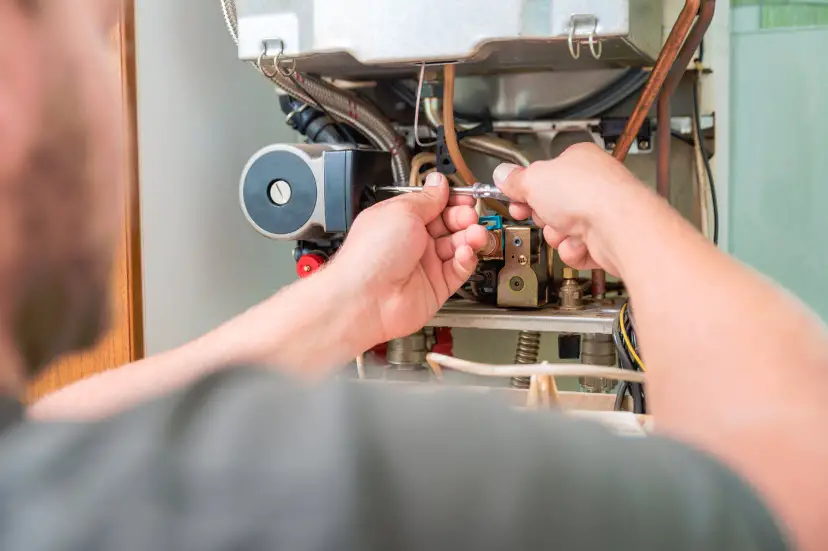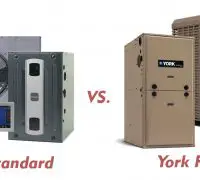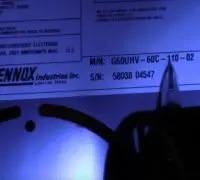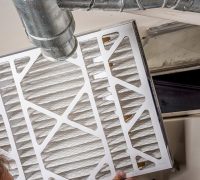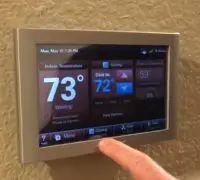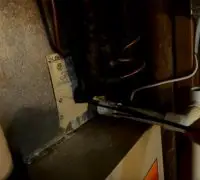Many things can go wrong around the house without even you knowing it (until it’s too late), but your furnace isn’t one. A malfunctioning furnace is easy to notice, especially when it’s malfunctioning in the middle of a night in the winter.
Furnaces are complicated machines with many electronic components that ensure accurate performance but are also prone to develop problems at some point.
When your furnace tries to start, then shuts down, you’re dealing with short cycling. Sometimes, the short cycling furnace won’t heat at all before turning off. It’s essential to identify the cause for the short cycling before you try fixing it. Most of the time, you should call the HVAC technician for investigation. He/she have the knowledge and experience to identify the cause and to make the repairs too.
You need to work with electrical and gas systems when addressing the short cycling on a furnace, so the risk for injuries is always significant.
Page Table of Contents
Why is it necessary to solve the short cycling?
There are several benefits for solving a short cycling furnace, and the categories are as following:
Convenience
When the furnace is short cycling, the temperatures in the house aren’t constant. It gets too cold or too hot, which is uncomfortable for everyone. A short cycling furnace is a malfunctioning unit and leads to spending on repairs and utility bills.
Energy
A furnace that is short cycling is practically running all the time. Non-stop performance lowers energy efficiency and increases your bills for utility. Moreover, the utility bills will be too high if the house is poorly insulated.
Safety
Short cycling may signal more severe problems with your furnace. Some of these problems pose a risk for the health of your family when not addressed. It would help if you never postponed fixing a short cycling furnace, no matter how bad your finances are at the moment.
What may cause a furnace to short cycle?
Most of the issues causing the furnace to short cycle are relatively easy to fix, but you must never delay fixing. Short cycling isn’t going to disappear on its own, so you should address it right away.
Here are the main reasons for which the furnace is short cycling:
- Dirty furnace filter
- Lousy flame sensor (flame rod)
- Blocked exhaust vent
- Blocked heat grates
- A furnace that is too big for your household
- A blocked exhaust vent
Some of the causes are easy and affordable to fix, whereas others will leave a big hole in your pocket. Either way, you need to fix the problem so that you don’t end up replacing the furnace altogether.
Bad flame sensor
In this situation, the furnace flame will turn off right after it ignites. You need to be very careful and not confuse the draft inducer motor starting with the furnace burner firing. For example, the inducer motor is supposed to begin 30-60 seconds after the gas will fire.
You may remove the cover of the furnace and observe if the burner is firing. Open your ears big and try to hear the “whoosh” sound of regular functioning. The flame sensor is supposed to identify if the gas valve is fired and doesn’t push raw gas inside the house. Needless to say, that’s a misfortunate situation as the gas could explode in case of an open flame.
When the sensor doesn’t identify any flame, it has to turn off the gas valve. But when the flame sensor is faulty isn’t going to turn off the burning furnace. It could shut down the furnace flame every time, just as well as it’s defective.
What’s the fix?
You will have to clean or replace the flame sensor. It’s not the most complicated DIY job to perform, and it shouldn’t last you more than an hour. You should call the professionals, though, if you feel that it’s too much for you or your skills.
Closed heat grates
The overheating of the furnace appears when the filters are blocked or the heat grates are closed. The dirty filter blocks air, so there’s not enough air throughout the system. Should that be the case, the short cycling will last from 3-10 minutes, but the furnace will stop before heating the household. The air that comes out of the open grates may be hotter than usual.
Air circulates out of ductwork into your house through the grates (vents and registers). The heat grates have dampers, so you may easily control the heat in every room. When too many vents are closed, the furnace blower won’t be able to spread enough heat. The heat will collect in the furnace, causing overheating and automatic shut down.
What’s the fix?
You will need to open some of the closed great (leave only 25% of them closed). You will need to move anything (furniture, boxes) that blocks the grates too.
The thermostat is installed in the wrong place.
When the thermostat isn’t mounted in the proper place, it will get too warm before the rest of your home. Short cycling happens, and the furnace stops before properly heating your household.
The situation occurs more often with DIY installations, but the wrong place for a thermostat is a mistake of professionals. When the thermostat is installed right above a heat great, it will get hot very fast on the wall close to the furnace. As it heats too fast, it will achieve the desired temperature faster than the rest of your house. Even a lamp without an LED bulb close to the thermostat could make the thermostat heat too quickly, shutting down the furnace before the house is heated.
What’s the fix?
You need to find the best place for the thermostat. It’s best to select a central location, away from a heating grate or a window so that the sun doesn’t shine right on the thermostat.
A dirty furnace filter
When the furnace filter is dirty, the furnace will eventually overheat. The short cycle will last 2-5 minutes, and the furnace will turn off before heating the air inside the house. Some hot air (hotter than usual) may come out the heat grates.
When the furnace becomes very hot, the high-limit switch will automatically turn off the furnace. The dirty filter blocks fresh and cold air gets inside the furnace for heating and distribution. Without any fresh air, the furnace will overheat pretty fast.
What’s the fix?
It’s easy to change the dirty filter. Make sure you check it regularly and replace it as necessary.
Blocked exhaust vent
With this scenario, the short cycle will last from 1 to 5 minutes. It’s a serious matter, and even lethal as the carbon monoxide will go through the vent inside the house. When the exhaust vent is blocked, the gas won’t be eliminated anymore, leaking into your home.
Birds or animal nests make the most common causes for blocked exhaust vent; beehives will do the same too. A significant amount of ice or snow can also block the vent. You may install screens on the vents for keeping pests at a distance, but these screens get clogged all the time too.
When you have a high-efficiency furnace (over 90% AFUE rating), the flue can exit through the wall. You need to check the exhaust flue to see that it’s coming out of your house.
What’s the fix?
You have to remove whatever is blocking the exhaust flue. It’s better to call a pest professional or animal control when animal nest or bees cause the blockage.
The furnace is too big for your household.
Despite other things in life, bigger is never better when it comes to furnaces in a home. Many homeowners choose a furnace that is too large for the household. If that’s the case for you, the short cycling will last for 3-7 minutes.
You know that you’ve picked the right size for the furnace when the heating cycles take a long time to complete, without apparent temperature fluctuations.
However, if the furnace is too large for your home, the short cycle will occur. The furnace will start, heat the air very fast, and shut down. It’s similar to driving a car. You have the proper size for the furnace when it runs at a constant 60MPH speed. If the furnace is too big and runs at 120MPH speed, it will only need a couple of minutes to “heat” the house (make the temp reach the thermometer setting, but not heat the whole home). It will stop, then run again with 120MPH, repeating the cycle without making a comfortable temperature inside the house. Not only that, the place isn’t warm, but the furnace is also using a lot of fuel, increasing the utility bill for nothing.
It’s not only the short cycling that a too large furnace may cause, though. Picking the right size of the furnace is a crucial step to take when upgrading the furnace.
What’s the fix?
You could make your house bigger J Joke aside; you need to switch to the proper size of the furnace to make use of the performance of the furnace. Heating bills higher than expected, temperature fluctuations, and constant short cycles are apparent signs that your furnace is too large for your home.
Make sure that you talk this time with the professionals for selecting the furnace. They will run the numbers and estimate which size of furnace you need for your home.
